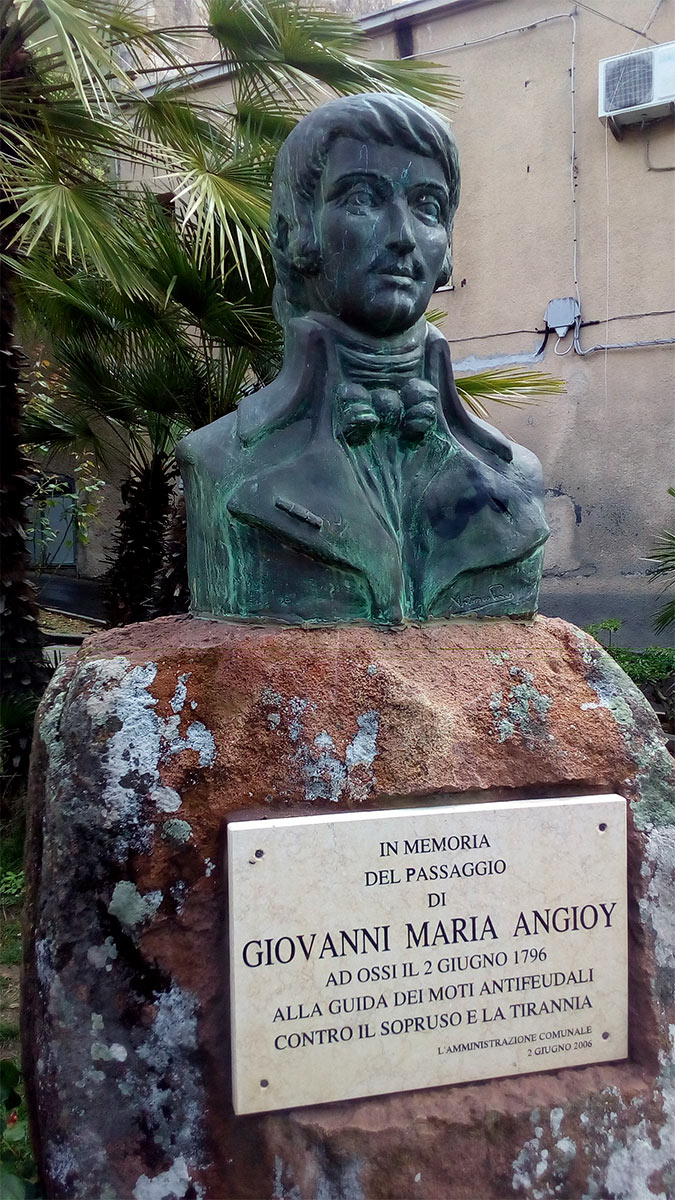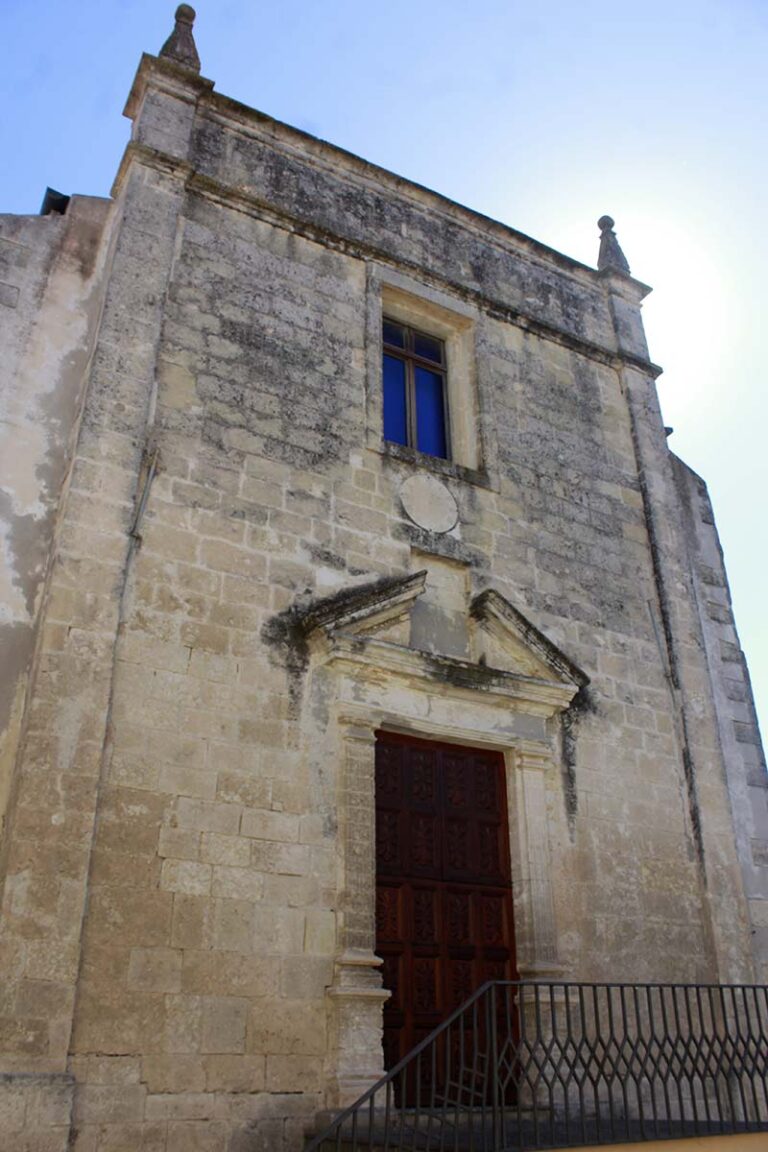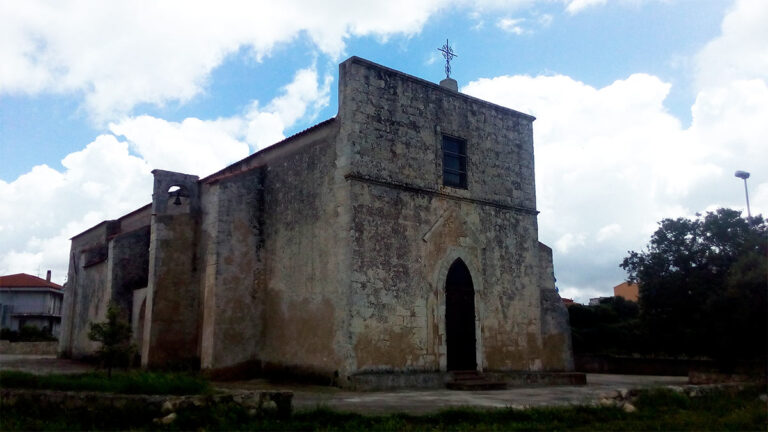
Ossi
Ossi, a territory inhabited since the late Neolithic age, proudly shows off the remnants of a rich history that included nuraghi, domus de janas, and nuragic towns. Significant traces of imperial authority may also be found in the area, not far from the main Roman route that once connected Carales with
Ossi, a territory inhabited since the late Neolithic age, proudly shows off the remnants of a rich history that included nuraghi, domus de janas, and nuragic towns. Significant traces of imperial authority may also be found in the area, not far from the main Roman route that once connected Carales with Turris Libissonis. Among them are the 35 sandstone tombs discovered at S. Antonio di Briai. Mediaeval texts refer to the the village as Ogothi. It was part of the Coros (Giudicato di Torres) curatorate, together with the nearby, now-defunct centres of Mara (or Mavar), Silvaru, Noale, Sa ‘e Ossi, and Briai.
Following the fall of the judicature, Ossi remained a part of the Malaspina estates until the mid-14th century, at which point it became a hamlet under the ownership of the Arborean Jurisprudence (until 1409), and subsequently the viscount of Narbona (1420).
Following many hereditary transfers, the Guj family—who established the “barony of Ossi”—owned it from 1550 until 1732.
The Amat family came to dominate the convoluted feudal succession, and then the Manca dynasty, whose most famous representative, the malevolent Duke of Asinara, infuriated the Ossi people by imposing unreasonable taxes.
Ossi has a long history of historical discontent with baronial oppression. The community’s initial issues were recorded in the 16th century and subsequently accentuated in the 18th century—more than ten years before the anti-feudal movement.
The 'umpeddu de sos sorighes', a tax introduced by Don Antonio Manca, is still one of the most hated. Grain was measured haphazardly to match the amount taken out of the rats in the baronial granaries.
Angioy’s journey through Ossi
Most of the people of Ossi joined the Alternos on their march towards Cagliari, knowing that they were battling hard to end feudalism. Angioy returned from Tissi to find the entire Ossi village waiting for him. He remained at the Reverend Ambrogio Piras‘ home.
Angioy sent a telegram from Ossi to the mayor of Ploaghe on June 3, 1796, ordering him to assemble the men of the town who were waiting to join him on the march to the island's capital. The message finished with the phrase 'God be with you for many years,' which Angioy frequently used in his own communications.
Angioy enjoyed cordial visits from various ‘printzipales’ and notable players in the anti-feudal movement during his brief stay in the Piras residence. Among them were the lawyer Gian Angelo Tola and the aristocrat Don Giovanni Serra of Ittiri, both of whom harshly denounced the Ossian Nicol Pinna, a wealthy landowner who supported the duke and was adamantly opposed to the winds of revolution sweeping over Ossi. On June 4th, Angioy arrived in Thiesi with his ever-growing entourage, headed for Cagliari.
Repression and terror
Following the defeat of Angioy, the viceroy authority started a harsh crackdown on anyone who dared to rebel against them. The brothers Maurizio and Giuseppe Serra attempted to form a new anti-feudal alliance with rebels from nearby towns after word got out about a possible armed mission against Ossi. Nevertheless, they were unable to act in time, as on August 11, 1796, a group of more than 160 armed men under the command of delegates don Ignazio Musso and don Nicolò Guiso stormed the settlement. The first to suffer was the knight Francesco Virdis, who was imprisoned due to suspicions that he was the primary instigator of the disturbances against the feudal lord. While some of the armed men were publicly flogged, the troops continued their mission of plundering Ossi.
Meanwhile, reinforcements from Tissi and Usini came; the Ossians set up positions on the top of the baronial mansion and the parish church bell tower, while the villagers tented on the peaks of what is now the ‘cronicaio’.
The viceroy soldiers were compelled to bring in another regiment of armed men when an arquebus skirmish began. Due to the unequal strength, a new detachment of troops came in the afternoon, forcing the peasants to withdraw into the countryside. Some chronicles describe brutality and atrocities against the people of Ossi.
Between 1796 and 1800, there were several arrests of Angioyans from Ossi: some of them were hanged, and their heads, severed from their bodies, were displayed within a cage outside the city gates of Sassari to dissuade potential revolutionaries.
Don Giovanni Serra, to whose trial Nicolò Pinna testified (‘in remembrance of the humiliation he had endured in front of Angioy), and the knight Francesco Virdis, who was imprisoned in the villa at Cossoine, were on trial.
Despite the fear, the Ossi community was able to win revocation of the duke’s feudal privileges earned during the insurrection, as evidenced by notarised papers from the early nineteenth century.
The Palace of the Barons
The palace, a rare example of a contemporary civic construction, was most likely the dwelling of the local feudal lord.
It was rebuilt in the 18th century after being influenced by the model of the Jesuit College of Sassari (the earliest nucleus of the University); the façade has the Piras family coat of arms, which dates from 1749.
It was purchased by the parish in the early nineteenth century and gradually fell into disrepair by the end of the century. It was recently rebuilt and serves as the Municipal Council’s office as well as the Museum of Civics and Rural Civilisation.
Baronial Prisons (now the Town Hall)
The oldest section of the village, Intro ‘idda, is located at the top portion of the hill, between the town hall and the parish. The ancient people remember seeing the ruins of a tower called’su Bastione’ in the square in front of the church.
The location of the current town hall was once home to the baronial jails, which also had a dungeon and an elevated level, according to archival records. Originally a district jail, they were converted into barracks in the 20th century and then dismantled to make way for the town hall.
Saint Bartholomew Church
Built from the ground up on the ruins of an earlier mediaeval temple, the Church of Saint Bartholomew has a Latin cross base structure, an original façade made of limestone ashlars, two 18th-century wooden altarpieces in its lateral chapels, and a magnificent statue of the saint patron on the main altar. The building’s current look is the result of a succession of restorations and additions (completed in the second part of the twentieth century) that changed its original appearance.
Sa Mandra de Sa Giua
On the eastern edge of the village, the Sa Mandra de sa giua archaeological site features a complex nuraghe with a hamlet nearby. The two further towers were found during the 1981–1983 excavation work but were covered out of concern for safety. Only the donjon of the nuraghe is still visible. In the thickness of the defence wall on that occasion, a cache of twenty-six bronze and iron implements was found. A ‘chieftain’ figure and other coincidentally found bronze pieces also were discovered in the area.
There are presently 15 identifiable huts, the most notable of which is the hut known as the ‘House of Bread’, which is a circular space surrounded by chairs and a basin. The exquisitely designed chamber is encircled by a wall system that encompasses the adjacent space containing the oven, which is believed to have had a cultic purpose. The hut serves as the primary emblem on the Ossi flag.
The Saint Victoria Church
Built in the 16th century, the church of St. Victoria has a rectangular apsidal plan, a tympanum on the façade and barbicans on the sides, on one of which rests the bell gable. In the 19th century, for the patron saint’s feast day, farmers and shepherds used to offer alms in kind (cheese, ricotta, cereals), as evidenced by administration records.
Bibliography
M. Derudas, Ossi. Storia, arte, cultura, Sassari, 2013
M. P. Derudas, Archeologia del territorio di Ossi, Piedimonte Matese, 2000
M. P. Dettori, Ossi, in Dizionario storico geografico dei comuni della Sardegna, a cura di M. Brigaglia e S. Tola, vol. 4, Sassari, 2009
B. Porqueddu (a cura di), Logos de Sardigna. Ossi, Sassari, 2003
Credits
A. Nasone, G. Ruggiu, S. A. Tedde.




